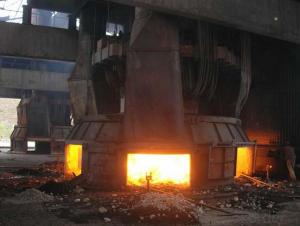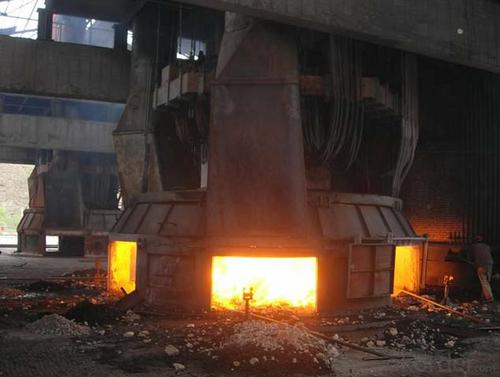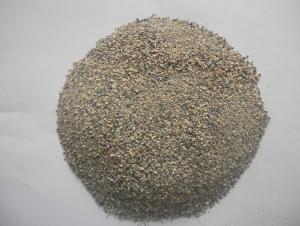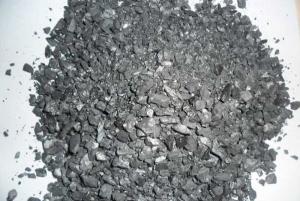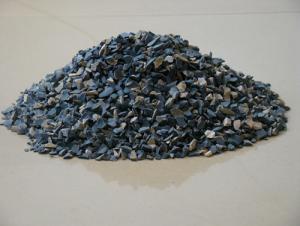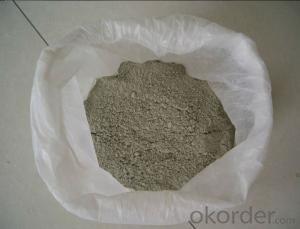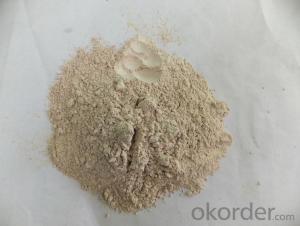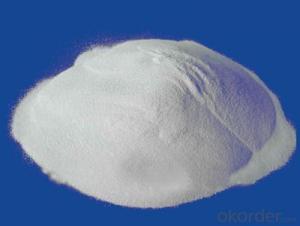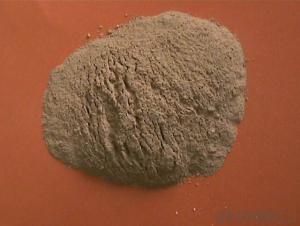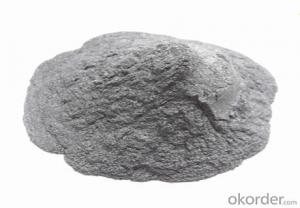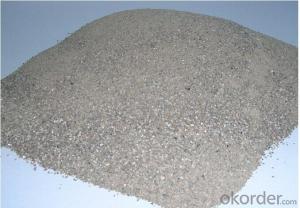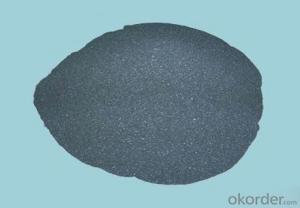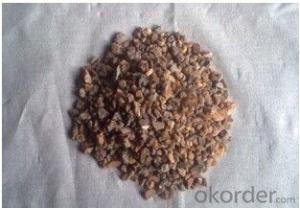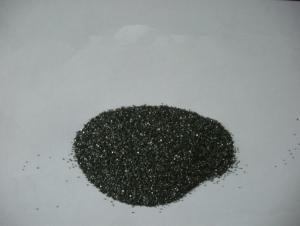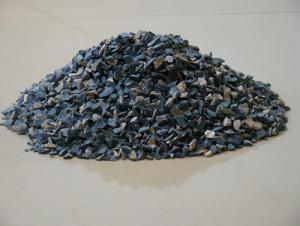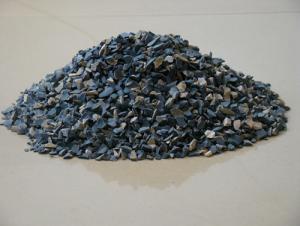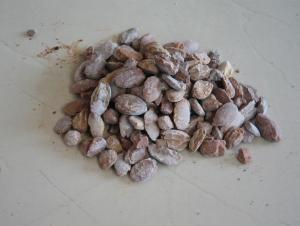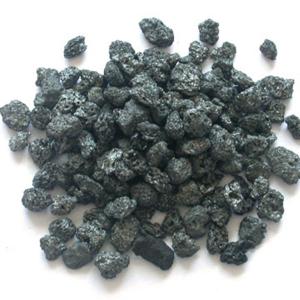Raw Materials for Refractory:Silicon-Manganese Alloy
- Loading Port:
- Tianjin
- Payment Terms:
- TT OR LC
- Min Order Qty:
- 20 m.t.
- Supply Capability:
- 1000 m.t./month
OKorder Service Pledge
OKorder Financial Service
You Might Also Like
Main application of Silicon-manganese alloy
Silicon-manganese is a kind of alloy that consists of silicon, manganese, iron and few carbon or some other elements, it's a ferrous alloy which is used widely and high production capacity. Its consumption is in second of ferroalloy production. The manganese and silicon in silicon-manganese have strong oxygen affinity, using the silicon-manganese in smelting steel, will produce MnSiO3 and MnSiO4, their melting point are 12700C and 1327 0C respectively, which has the advantages of low melting point, big granule, easy to float up, good deoxidizing effect and so on.
In the same condition, using manganese or silicon to deoxidize separately, the burn out rate are 46% and 37%, but it is only 29% if using manganese alloy to deoxidize. So, it is used widely to smelting steel and its output increases faster than ferroalloy's, so has become an indispensable composite deoxidizing and alloy additives in steel industry. The silicon-manganese which contains carbon below 1.9% still is used to produce medium/low-carbon ferromanganese and semi-finished products of electro silicothermic process manganese metal.
In the ferroalloy production enterprises, they called the silicon-manganese for steelmaking as commercial silicon-manganese, the silicon-manganese for medium/low-carbon ferromanganese as self-use silicon-manganese and the silicon-manganese for making manganese metal as high silicon-manganese.
Grade | Chemical Composition (%) | ||||||
| Mn | Si | C | P | S | |||
| I | II | III | |||||
| ≤ | |||||||
| FeMn64Si27 | 60.0~67.0 | 25.0~28.0 | 0.5 | 0.1 | 0.15 | 0.25 | 0.04 |
| FeMn67Si23 | 63.0~70.0 | 22.0~25.0 | 0.7 | 0.1 | 0.15 | 0.25 | 0.04 |
| FeMn68Si22 | 65.0~72.0 | 20.0~23.0 | 1.2 | 0.1 | 0.15 | 0.25 | 0.04 |
| FeMn64Si23 | 60.0~67.0 | 20.0~25.0 | 1.2 | 0.1 | 0.15 | 0.25 | 0.04 |
| FeMn68Si18 | 65.0~72.0 | 17.0~22.0 | 1.8 | 0.1 | 0.15 | 0.25 | 0.04 |
| FeMn64Si18 | 60.0~67.0 | 17.0~20.0 | 1.8 | 0.1 | 0.15 | 0.25 | 0.04 |
| FeMn68Si16 | 65.0~72.0 | 14.0~17.0 | 2.5 | 0.1 | 0.15 | 0.25 | 0.04 |
| FeMn64Si16 | 60.0~67.0 | 14.0~17.0 | 2.5 | 0.2 | 0.25 | 0.3 | 0.05 |
- Q: Where is the production of refractory manganese alloy manufacturers? Manganese is recommended between 63 and 70!
- The cut is relatively transparent if you jam, we have also used silicon manganese alloy
- Q: How to do environmental impact assessment for refractory Co., Ltd.
- 1, first of all, the EIA unit and the construction party signed the EIA contract. The contract is only legally valid. Generally speaking, the contract will indicate that the first payment has been received before the work begins.2. Collecting information. This is a very important link in the EIA, which is directly related to the quality of the eia. There is a great variety of data,Generally, the construction party will write a list of environmental impact assessment information.
- Q: What a blast furnace refractories generally?
- Common refractories often use silica?brick, semi-silica brick, fireclay brick, high alumina brick, magnesia brick, etc. special materials often used are AZS brick, corundum brick, directly bonded magnesia-chrome brick, carborundum brick, silicon nitride bonded silicon carbide bricks, nitrides, silicides, sulfides, borides, carbides and other non-oxide refractory materials; calcium oxide, chromium oxide, aluminum oxide, magnesium oxide, beryllium oxide refractory insulating refractory frequently used. material diatomite products, asbestos products, insulation boards. monolithic refractories have fettling frequently used, refractory ramming mixes, refractory castable, fire-resistant plastic, refractory clay, refractory gunning refractory projection material, refractory coatings, lightweight refractory castable, stemming etc.
- Q: What is the function of refractory in ceramics?
- Refractory is used as materials of kiln,sagger and kiln car for ceramic sintering. Its refractoriness is higher than ceramics, and the essential material and tool for ceramic sintering.
- Q: What needs to be noted when choosing and using blast furnace fireproof materials? Who knows?
- there are different temperatures in various parts of the blast furnace, thus using different types of refractory.
- Q: What defect does fused cast refractories have ?
- What defect doesfusion-cast refractory material have ? In glass production, in addition to refractory as a building material and consider its durability, we still must attach great importance to its influence on glass quality. In such cases, the impact on the quality of glass is mainly the defects that eroded down refractory materials mixed in the glass, thus being prodeced of grass products. Defects are mainly foreign body defects such as sand, knot and wave reinforcement. What may directly affect the quality of glass are sidewall block and brick kiln bottom. I hope my answer can help you.
- Q: Who can introduce the external wall thermal insulation materials fire rating regulations?
- 1. The thermal insulation material of level A combustion performance: Rock wool, glass wool, foam glass, foamed ceramics, foam cement, hole-closed perlite, etc. 2. combustion performance is level B1 insulation materials: Extruded polystyrene board (XPS) after special treatment / Special treatment of polyurethane (PU), phenolic aldehyde and gelatine powder polyphenyl granule 3 combustion performance is level B2 insulation material: Molding polystyrene board (EPS), extruded polystyrene board (XPS), polyurethane (PU), polyethylene (PE), etc. See the 2009 edition construction technical measures 4.3.6 Level A insulation material is only for fireproofing, but its thermal insulation performance is not better than organic XPS \\ EPS and other materials. I feel the best insulation materials should be modified phenolic board, which can keep insulation and fireproofing, but the unit price is very expensive. Insulation materials in the domestic market have some disadvantages, it is better to considere the materials within the acceptable range in the building needs.
- Q: what is the fireproofing material of engine room? who knows it ?
- 1. The new type fire?retardant?coating in fire retardant coating, the expanded vermiculite, expanded perlite heat insulation material and cenosphere adiabatic powder, etc. These inorganic component, is a major part of the thick coating type of fireproof coating, and they also are the major factor affecting the level of performance of fireproof coatings. The fireproofing thermal insulation properties of fireproof coating, is mainly determined by the fire back surface temperature of this factor, but also related to the fire endurance. If it reaches the same temperature for a longer time, it shows that it's fireproof thermal insulation is better, and the fire endurance therefore is higher. 2. The new fireproof board new fireproof board now is welcomed by the people and the important factor is its environmental protection, and with the increasing high-rise buildings, the fire protection requirements and strength requirements are also rising, it is a big challenge for the performance and standard of the fireproof board.. Now fireproof board is mainly used siliceous material or calcareous materials, and then mixed with the fiber material, lightweight aggregate, adhesives and chemical additives, it is not only be fireproofing, but also improve their thermal insulation performance, and light weight, good carrying capacity, good durability, no aging problem, more importantly, it is good in environmental protection.
- Q: can slag tailings be used to be the base materials of refractory materials ?
- the rest of it can be used as refractory additives. the scale currently used clay bricks to make high-temperature liquid. It is easy to produce large amounts of liquid because of the high iron content, instead of its refractoriness. But it can be used as refractory minaralizer.
- Q: Who knows how many poured refactory material are there?
- Casting refractory material, refractory material used often are AZS brick, corundum brick, direct bonding magnesia chrome brick, silicon carbide, silicon nitride bonded silicon carbide brick, nitrides, silicides, sulfide, boride, carbide and other non oxide refractory materials; calcium oxide, chromium oxide, aluminum oxide, magnesium oxide, beryllium oxide and other refractory materials.
Send your message to us
Raw Materials for Refractory:Silicon-Manganese Alloy
- Loading Port:
- Tianjin
- Payment Terms:
- TT OR LC
- Min Order Qty:
- 20 m.t.
- Supply Capability:
- 1000 m.t./month
OKorder Service Pledge
OKorder Financial Service
Similar products
Hot products
Hot Searches
Related keywords
